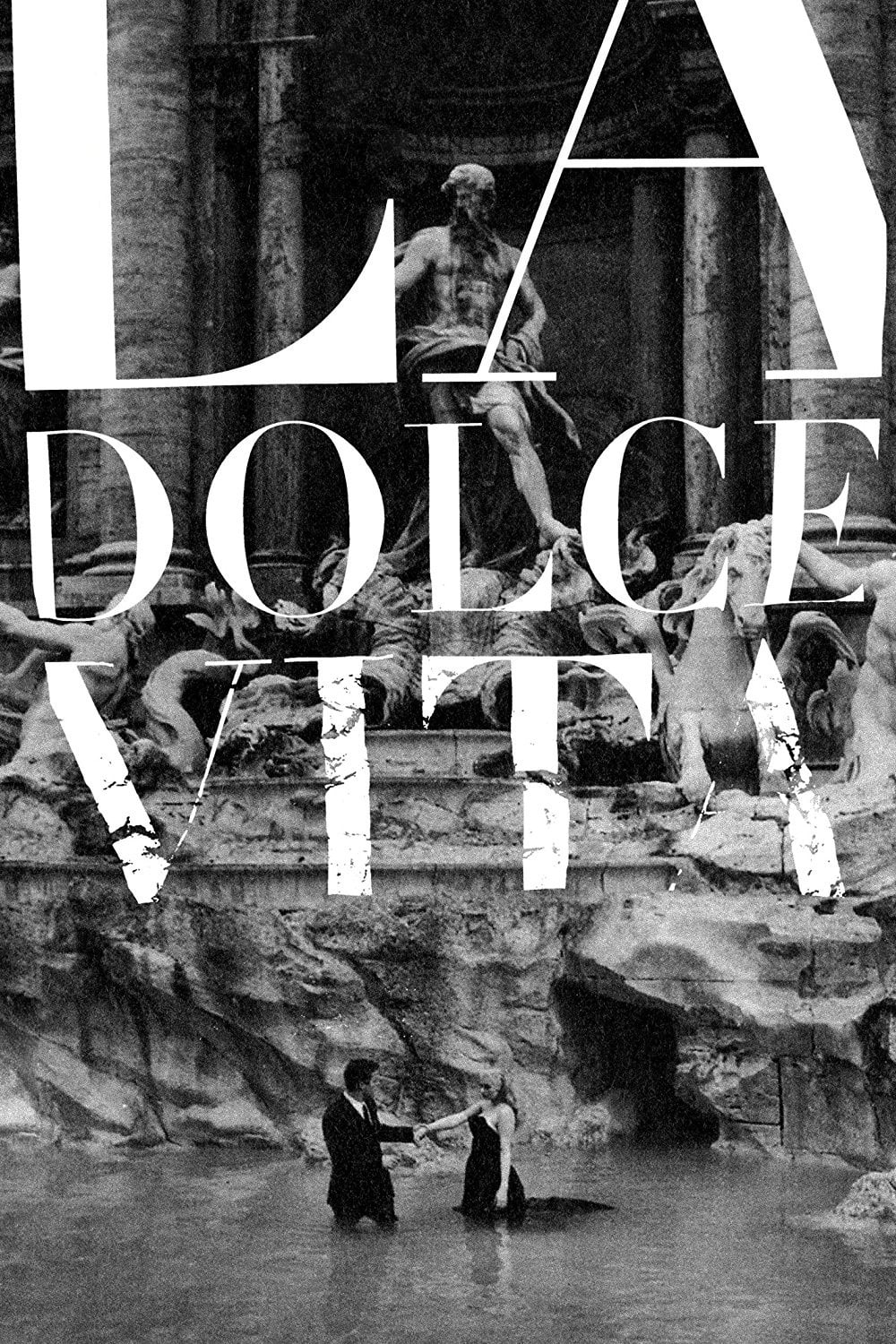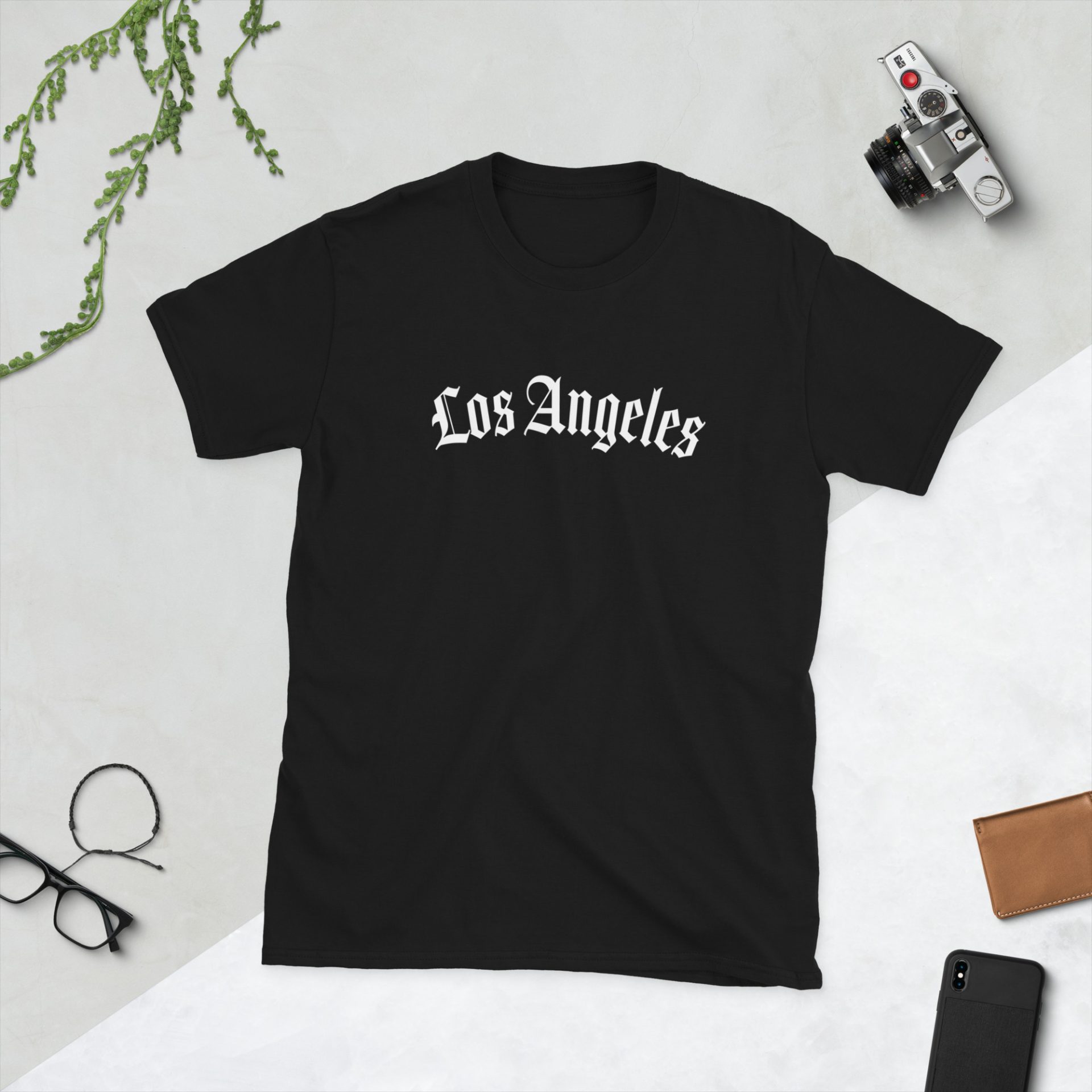Spoilers:
- The fish reveals life’s emptiness.
- Marcello abandons writing dreams.
- Emma’s overdose highlights their disconnect.
- Steiner’s suicide shocks Marcello.
- Marcello succumbs to decadent lifestyle.
- Anjelica the star escapes paparazzi.
- Party at beach alienates Marcello.
La Dolce Vita: Statistics
Overview
- Title: La Dolce Vita
- Director: Federico Fellini
- Release Year: 1960
- Country: Italy
- Duration: 174 minutes
Box Office
Budget: $8 Million
Worldwide Gross: $19.5 Million
Awards
- Palme d’Or at the 1960 Cannes Film Festival
- Academy Award for Best Costume Design
Critical Reception
- Rotten Tomatoes: 96% Approval Rating
- Metacritic Score: 85/100
Cast
- Marcello Mastroianni as Marcello Rubini
- Anita Ekberg as Sylvia
- Anouk Aimée as Maddalena
- Yvonne Furneaux as Emma
Federico Fellini’s La Dolce Vita masterfully depicts the tormented struggle and hollow allure of modern hedonism. Set in the backdrop of post-war Rome, its labyrinthine narrative follows Marcello, a journalist caught in a spiraling pursuit of pleasure, drama, and tragedy – the intoxicating, ‘sweet’ life. Yet, the film stealthily subverting expectations, remains a profound critique of Italy’s ‘economic miracle.’Fellini’s expert blending of traditional and contemporary filmmaking styles, construct a dreamlike realm underpinned by a piercing sense of reality. The episodic structure is an in-depth exploration of Marcello’s psyche, revealing a profound analysis of humanity’s search for significance amidst societal pressures.Adobe of symbolism, the film serves up indelible images. The Christ statue suspended over Rome by a helicopter, a metaphorical overture infusing religious critique with ostentatious spectacle, evokes Rome’s effortless clash of antiquity and modernity.La Dolce Vita harnesses the power of its paradoxical narrative to dissect superficiality. Fellini explores the depth of human contradictions, creating characters drowning in the excess of their shallow lives; personifying the detachment of self-absorbed personalities from reality.The film’s iconic final scene, with the monstrous sea creature washed ashore, perhaps symbolizes Marcello’s death of innocence, his metamorphosis into a grotesque reflection of society’s superficiality, and the death of a more profound, genuine life which he could have led.Fellini’s masterpiece, weaved in style and substance, employs mood, environment and performance to portray an individual’s journey grappling, straying, and eventually succumbing to societal constructs. It underlines the paradox of a life spent in quest of spirituality and reality in the throes of decadence and self-indulgence.La Dolce Vita, distinctly Felliniesque, encapsulates the essence of the cinema – as a mirror, an escape, a critique, a dream, a truth; a vivid examination of the surreal elements of life trapped within the confinements of a very real world. It is not only a film; it is a timeless, philosophical enquiry into the human condition.
Introduction to La Dolce Vita
“La Dolce Vita,” directed by Federico Fellini, is a celebrated piece of Italian cinema from 1960. Capturing the vibrance and decadence of Rome post-WWII, the film left an indelible mark on the industry. It’s a 174-minute depiction of a hedonistic society burgeoning in the midst of change. The narrative follows Marcello, a tabloid journalist, on his quest for meaning amidst the excess of the modern world.
Interesting Facts
- The film’s title translates to “The Sweet Life.”
- It debuted at the 1960 Cannes Film Festival, winning the coveted Palme d’Or.
- The famous Trevi Fountain scene has become one of cinema’s most iconic moments.
- “Paparazzi” became synonymous with the photographers in the film.
Speculations and Happenings
Rumors swirled around the production due to Fellini’s extravagant style. It’s said that he pushed boundaries, both creatively and ethically. Critics speculated about hidden meanings and the reflection of Italian society, challenging traditional norms. The film was controversial for its depiction of religion and morality, facing criticism from the Vatican. Despite this, it remains a staple of cinematic discussion.
Public Perception Over Time
Initial reactions were polarized. Many hailed it as a masterpiece, others saw it as a disturbing reflection of modern mores. Over the years, its reputation has solidified positively. Widely studied in film discourse, “La Dolce Vita” emerged as a cultural touchstone. The film’s moral ambiguity continues to be debated, but it’s revered for its artistry and commentary on fame and indulgence.
Bizarre and Noteworthy
- The term “paparazzo” was coined after a character, solidifying its place in the lexicon.
- In its heyday, the film sparked protest from traditionalists, amplifying its allure.
- Hollywood stars reportedly sought Fellini post-release, wanting to embody his film’s allure.
La Dolce Vita (1960) Beat-by-Beat Breakdown
Directed by Federico Fellini, ‘La Dolce Vita’ is a cinematic masterpiece that takes us through seven key episodes in the life of journalist Marcello Rubini. Here’s the rundown:
-
Christ Statue Helicopter Intro:
A chopper drags a Christ statue over Rome, journalists, including Marcello, chase it. Symbolizes modern disconnect from religion.
-
Maddalena’s Night:
Marcello’s affair with Maddalena. They hit up a prostitute’s place. Morning comes, nothing changes. Sad glitz, sadder people.
-
Steiner’s Party:
Philosophical Steiner oozes insight at his elite soirée, making Marcello question his life choices. The intellectual’s dilemma.
-
Marcello’s Father Drops By:
A night out with Marcello’s dad. Age-old chase for youth and fun. Ends in discomfort, alienation. Father and son more distant than ever.
-
The Miracle Madonna:
Rural faith circus. Children claim Virgin Mary sighting, crowds flock, media feasts. No sign of the divine, just human desperation.
-
Steiner’s Tragedy:
Steiner’s perfect facade cracks, family destroyed by his own hands. Shocks Marcello to his core. Intellectual paradise lost.
-
Orgy at the Beach:
Final blowout. Desperate grasp at happiness through excess. Dawn breaks on emptiness, a beached sea monster echoing lost souls in Rome.
Final Thoughts:
‘La Dolce Vita’ is a relentless exploration of the sweet life’s sour underbelly. Fellini doesn’t just show us a story; he plunges us into the existential quandary of modern life. Fast, punchy, and devastatingly honest.

Opening Analysis of La Dolce Vita
The film starts in a striking visual manner. The camera captures the sweeping beauty of Rome, juxtaposed with the chaotic lives of its inhabitants. The opening sequence features Marcello, our protagonist, as he navigates through a day filled with distractions and contradictions. The tone is set with a blend of glamour and disillusionment, giving viewers a sense of the hedonistic world we’ll explore. It raises questions about pleasure, purpose, and identity from the start.
Story Formula Breakdown
La Dolce Vita fits into a unique formula that combines episodic structure with character study. Here’s the breakdown:
- Exposition: Introduces Marcello and hints at his inner conflicts.
- Inciting Incident: Marcello’s pursuit of a life filled with pleasure leads him into various social circles.
- Rising Action: Marcello’s encounters with several women and affluent friends explore the themes of love and dissatisfaction.
- Climax: A pivotal moment where Marcello confronts his empty lifestyle and starts questioning his choices.
- Falling Action: The deteriorating relationships and emptiness that arise from indulgence are spotlighted.
- Resolution: Marcello’s realization of the futility of his pursuits leaves him at a crossroads.
Character-Driven or Story-Driven?
This film is primarily character-driven. The story revolves around Marcello’s existential crises rather than a linear plot. His interactions and the people he meets define the narrative. The emphasis lies on his internal struggles, providing a lens through which we examine the decadence of Roman high society.
Memorable Characters
Marcello is memorable for his complexity. He embodies a flawed hero searching for meaning in a shallow world. His charm, charisma, and vulnerability resonate with audiences. Characters like Anita Ekberg’s Sylvia and the intellectual Steiner provide contrasting perspectives, enriching Marcello’s journey and showcasing different facets of life.
Main Characters
- Marcello Rubini: A jaded journalist torn between the allure of hedonism and the desire for deeper meaning.
- Sylvia: An enigmatic actress representing the unattainable joy and freedom Marcello craves.
- Steiner: An intellectual symbolizing the contrast between superficiality and profound existence.
- Madame A.: A wealthy socialite who embodies the desires and treachery of high society.
- Fanny: The traditional love interest, showcasing Marcello’s struggle between stability and chaos.
Story Flow Template
To emulate the structure found in La Dolce Vita, follow this template:
- 1. Exposition: Introduce the main character and their world.
- 2. Establish Theme: Identify the central conflict or theme related to pleasure and purpose.
- 3. Encounter Diverse Characters: Introduce characters that challenge and provoke the protagonist.
- 4. Internal Conflict Development: Deepen the protagonist’s struggles as they chase external fulfillment.
- 5. Climax of Self-Realization: Create a pivotal moment that forces the character to confront reality.
- 6. Resolution: Offer a sense of closure or indicate an ongoing struggle, leaving the audience with lingering questions.
Simple Summary of the Story
In simple terms, La Dolce Vita is about a journalist named Marcello who navigates the hedonistic nightlife of Rome. He encounters various characters and experiences that make him question his life choices. The film explores themes of pleasure, emptiness, and the search for meaning in a world filled with distractions.
Adequate Critique
“La Dolce Vita” debuted in 1960 and quickly became a masterclass in cinematic storytelling. The episodic nature can appear slow-paced, yet it effectively reflects the protagonist’s languid and distracted lifestyle. Critics lauded its ability to portray post-war disillusionment and the moral void of excess. Fellini challenged us to recognize emptiness in a society obsessed with pleasure.
Cinematic Techniques
The film is not just known for its narrative but also for its stylistic choices. Fellini’s use of lively cinematography captures Rome’s vibrancy. Key scenes, such as the iconic Trevi Fountain moment, are etched in history due to their emotional weight and visual grandeur. The sound design subtly compliments these visuals, juxtaposing agreeable pop music with somber realities. The contrast heightens our awareness of the film’s deeper messages.
Final Thoughts
Ultimately, La Dolce Vita is a timeless exploration of what it means to live a fulfilling life amidst chaos and superficiality. While it may leave some in search of a classic resolution, it stands firm in its introspective style. The characters are not merely vehicles for the plot; they embody psychological landscapes of desire and regret. Marcello’s journey remains a universal quest, making the story resonate with audiences even years after its release.
Similar Works
If you appreciate La Dolce Vita, you may also enjoy the following films:
- The Great Beauty: A modern reflection of similar themes in contemporary Rome.
- 8½: Another Fellini classic exploring the conflict between art and personal fulfillment.
- Vanilla Sky: A psychological exploration of dreams and reality.
- Lost in Translation: Themes of isolation and connection in an unfamiliar environment.
Influence on Cinema
La Dolce Vita has had a significant impact on world cinema. It has inspired numerous filmmakers and writers to explore similar themes of existential angst and the search for identity. Its style and approach have influenced the way stories about personal dilemmas are told, setting a precedent for character-driven narratives.
Famous Quotes
Some memorable quotes from La Dolce Vita reflect its philosophical depth:
- “I want to be a good man.” – Marcello
- “We have only one life; it’s necessary to live it beautifully.” – Sylvia
- “What is Italy to me? A cultural burden.” – Steiner
A Cultural Context
The backdrop of post-war Italy enhances the narrative. The film reflects a society caught between traditional values and new, liberated ways of living. This time period added layers of complexity to Marcello’s character, making his struggles a mirror for many searching for identity during tumultuous changes.
Legacy
La Dolce Vita still resonates. Its exploration of life’s fleeting pleasures and the search for meaning remains relevant. Characters represent varying facets of human experience, and viewers find pieces of themselves in Marcello’s journey. The film challenges us to confront our own lives and the choices we make amidst societal pressures.
La Dolce Vita: A Deep Dive
Inciting Incident
The inciting incident of “La Dolce Vita” occurs when Marcello meets the beautiful actress, Sylvia. This moment shifts his life from the mundane to the intoxicating world of pleasure and excess.
Symbolism: Sylvia represents the allure of the “sweet life.” She embodies temptation and the superficiality of fame. Marcello’s obsession with her signifies his struggle between aspiration and emptiness.
Act Structure
The film has a clear three-act structure.
- Act 1: Introduction to Marcello’s life as a journalist.
- The film opens with a helicopter flying over Rome, establishing the glamorous setting.
- Marcello’s interactions reveal his discontent with both his job and personal life.
- Act 2: Marcello is drawn deeper into the elite lifestyle.
- He attends lavish parties and meets various characters, each representing different aspects of society.
- His relationship with Emma, his fiancée, showcases his inability to commit.
- Act 3: The climax leads to an emotional breakdown.
- Marcello’s spiral culminates in a confrontation with his life choices after a series of hollow experiences.
- His repeated searches for meaning in pleasure lead to a profound sense of isolation.
Climax
The climax occurs after the death of his friend, and Marcello’s disillusionment reaches a peak. He realizes that the life he sought is just a façade.
Emotional Capital: This moment evokes despair. Marcello’s journey through indulgence results in a stark realization of his isolation. The weight of his choices hits hard.
Build-Up to Climax
The build-up is steady. Each character Marcello meets leads to discontent. From shallow encounters to the dramatic death, the tension escalates. Every party, every superficial interaction, adds layers to his internal conflict.
Tension and Release
The movie artfully builds tension through Marcello’s escapades and interactions. The vibrant nightlife contrasts with his internal struggles.
Release comes in fleeting moments. Yet, just as Marcello finds slight clarity, the cycle renews. The tension never fully dissipates, leaving the audience as restless as Marcello.

Ending of La Dolce Vita Explained
At the end of *La Dolce Vita*, Marcello, the main character, finds himself on a beach. He sees a mysterious woman who might symbolize hope or unattainable dreams. He reaches out to her but she doesn’t respond; she just looks away, leaving him isolated and alone. This moment captures his disillusionment with the superficial pleasures he has pursued throughout the film.
How Writers Would Categorize the Ending
Writers might categorize this ending as open-ended and tragic. It leaves audiences with lingering questions about fulfillment and happiness.
Symbolic, Thematic, and Speculative Meanings
- Symbolic: The beach scene represents a stark contrast to the glamorous, superficial world Marcello has been part of.
- Thematic: It highlights themes of existential despair and the search for deeper meaning in life.
- Speculative: The woman could represent unachievable dreams, suggesting that true happiness may always be out of reach for Marcello.
Loose Ends and Payoffs
The ending resolves Marcello’s internal conflict, illustrating the emptiness of his lifestyle. He realizes that chasing fame and pleasure does not lead to fulfillment. However, it leaves the audience pondering whether he will change or continue on the same path.
Character Changes by the End
By the end, Marcello is more introspective and aware of his discontent. He understands he is searching for something more meaningful, but his inability to connect with the woman reflects his ongoing struggle.
Lessons for Writers
Writers can learn the power of ambiguity in an ending. By leaving questions unanswered, you provoke thought and discussion. A strong ending can exemplify the character’s journey while also leaving room for interpretation. It’s about showing transformation, even when it’s not straightforward or happy.
Dialogue Style in La Dolce Vita
The dialogue in La Dolce Vita is a mix of sharp, terse exchanges and long-winded philosophical musings. Characters often speak in fragments, reflecting their inner turmoil and existential crises. The conversations can be non-linear, mirroring the chaotic nature of the protagonist’s life.
Quintessential Character Moment
A defining moment in dialogue is when Marcello asks, “What is life?” This encapsulates his search for meaning amidst the superficiality surrounding him. It shows his conflict between desire and despair, which is central to the film.
Iconic Lines
- “I want to be a writer.” – Marcello
- “You are all like me.” – The crowd at the nightclub
- “I don’t want to live like this!” – Marcello to his father
Uniqueness of the Dialogue
The dialogue stands out for its candidness and its mix of Italian colloquialisms with philosophical reflections. It captures the essence of post-war Italian society, bringing out various social classes and their contrasting values.
Dialogue Density
The script is dialogue-heavy, but it’s tightly woven with visual storytelling. Many scenes rely on brief exchanges that evoke deeper meanings without overt exposition.
Realism in Dialogue
The realism is rooted in everyday conversations. Characters speak as people do in real life, full of interruptions and complexities, making their interactions feel authentic.
Lessons for Writers
- Emphasize subtext. Characters often say less than they mean.
- Use fragments. Real conversations are rarely complete sentences.
- Combine dialogue with visuals. Let actions complement words.
Scene Breakdown
In the scene at the beach, Marcello interacts with various characters, each representing different aspects of pleasure and emptiness. As he moves from group to group, dialogue snippets become representative of their lifestyles:
One woman says, “Why do you take life so seriously?”—reflecting the frivolity of the moment. Another character converses about love only to laugh it off, emphasizing a lack of depth. The repetitiveness highlights Marcello’s growing disillusionment.
This scene effectively showcases how dialogue reveals character motivations and the overarching theme of existential ennui. The mix of banter and deeper discussions paints a clear picture of a world obsessed with hedonism yet spiritually vacant.
La Dolce Vita
A dance of shadows and neon lights,
Where laughter wraps around the silence.
Glimpses of joy draped in cigarette smoke,
Paparazzi ghosts haunt the cobbled streets.
Hearts beat to the rhythm of excess,
Yet there, beneath the surface, a question lies.
What’s the cost of the good life?
Masked faces parade in kaleidoscopic bliss,
A sip of champagne, a whisper of sorrow.
In the twilight, the beauty fades;
Who will remember the laughs when the curtain falls?
To live sweetly is to taste the bittersweet,
And so we raise a glass to the charade,
Staring into the abyss of our own making.
Unique Writing Lessons from La Dolce Vita
Federico Fellini’s “La Dolce Vita” offers more than just visual storytelling. It provides insights into narrative construction and character development.
-
Embrace Ambiguity
The film thrives on ambiguity. Characters often don’t resolve their conflicts. Use ambiguity to inspire deeper engagement from readers.
-
Contrasting Characters
Fellini employs a wide array of characters to showcase diverse human experiences. Create characters with opposing traits to highlight conflict and theme.
-
Everyday Epic
Transform ordinary moments into significant experiences. Use mundane settings or actions to reveal something profound about your characters.
-
Visual Poetry
Fellini’s cinematography tells a story. Even in writing, create vivid imagery. Let your words paint scenes that evoke emotions.
-
Social Commentary
Embed critiques of society within your narrative. Let characters reflect broader cultural dilemmas, making the story relevant and impactful.
-
Fluid Narrative Structure
Disregard traditional linear story arcs. Use episodic storytelling to explore characters and themes without strict timelines.
-
Introspection and Isolation
Highlight moments of solitude. Characters frequently reflect on their lives, adding depth. Let your characters have quiet moments to reveal their inner thoughts.
-
Symbolism and Motifs
Use symbols to represent larger ideas. “La Dolce Vita” uses recurring imagery. Employ motifs to reinforce themes throughout your narrative.
-
Authentic Dialogue
Create dialogue that feels natural. The conversations in the film reveal personality and intent without sounding scripted.
-
Interpersonal Relationships
Focus on the dynamics between characters. Relationships are central to the story. Use them to drive the narrative forward.
Federico Fellini: Brief Discography
Federico Fellini was a renowned Italian filmmaker known for his unique storytelling and innovative cinematic techniques. His notable works include:
- La Strada (1954)
- Nights of Cabiria (1957)
- La Dolce Vita (1960)
- 8½ (1963)
- Amarcord (1973)
- City of Women (1980)
- Intervista (1987)
Fellini’s Style
Fellini’s style blends surrealism and realism, often reflecting the complexity of human emotions and society’s absurdities.
Review 1:”This is a long, often stunning, sometimes tedious, consistently intelligent, and always beautiful film. It’s full of unforgettable images, Federico Fellini strides into the realm of Tinto Brass and Joe D’Amato as he presents a series of loosely-related scenes from Rome.”- Reviewed by Steve BiodrowskiExcerpt Link: https://filmfestivaltraveler.com/film-reviews/32-film-reviews/132-la-dolce-vita-film-reviewReview 2:”La Dolce Vita is an episodic survey of the souls in torment and at play under the dwindling shadow of the Eternal City. Director Federico Fellini assaults our eyes with a torrent of imagery for which he seems the last great analogue spiritualist.”- Reviewed by Fernando F. CroceExcerpt Link: https://www.slantmagazine.com/film/la-dolce-vita/Review 3:”A daring, unflinching portrait of the decay of society, a journey through the dark, the grotesque and the eerily beautiful, a stream of consciousness marked by unforgettable moments and images.”- Reviewed by Alex SimonExcerpt Link: https://www.hollywoodintoto.com/la-dolce-vita-blu-ray-review/Review 4:”La Dolce Vita is funny, dramatic, grand, ironic, penetrating, a visual and symbolic pageant of life and love and godlessness, of ‘the sweet life’ that isn’t so sweet—a defining film from a great director who managed to put his very signature on cinema.”- Reviewed by Jeffrey M. AndersonExcerpt Link: https://combustiblecelluloid.com/classic/ladolcevita.shtmlReview 5:”La Dolce Vita is visually stunning, a sumptuous feast of opulence and squalor. Fellini captures the emptiness of the high life with surgical precision and biting satire, and yet the movie is never less than beautiful to look at.”- Reviewed by K. HarrisExcerpt Link: https://www.amazon.com/gp/customer-reviews/RCYTZ5946JHKH/ref=cm_cr_getr_d_rvw_ttl?ie=UTF8&ASIN=B0002NY8XA
- La dolce vita – Wikipedia
- La Dolce Vita (1960) – IMDb
- La dolce vita (1960) | The Criterion Collection
- For Criterion Consideration: Federico Fellini’s La Dolce Vita
- La Dolce Vita – Review – Cinema from the Spectrum
- Life Lessons from Federico Fellini – Italy Segreta – Culture
- La Dolce Vita: a movie which represents a time and an history
- La Dolce Vita at 60: the fame, the fortune, the fountain | Federico Fellini
- Wonderful photography in Federico Fellini’s movies – Santini …
- What does Wes Anderson have to owe to Federico Fellini? : r/TrueFilm




Leave a Reply